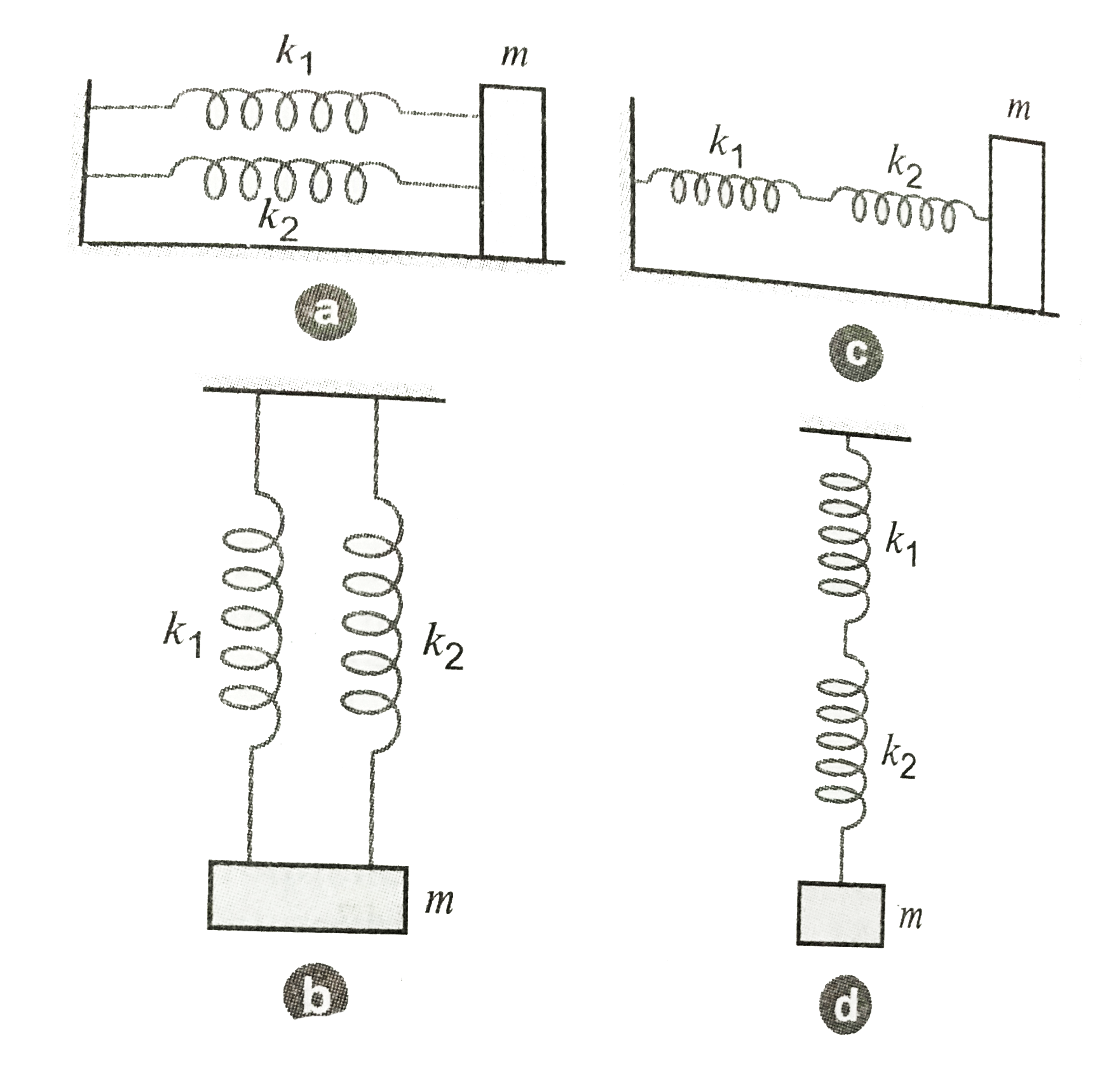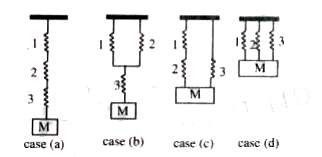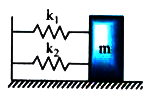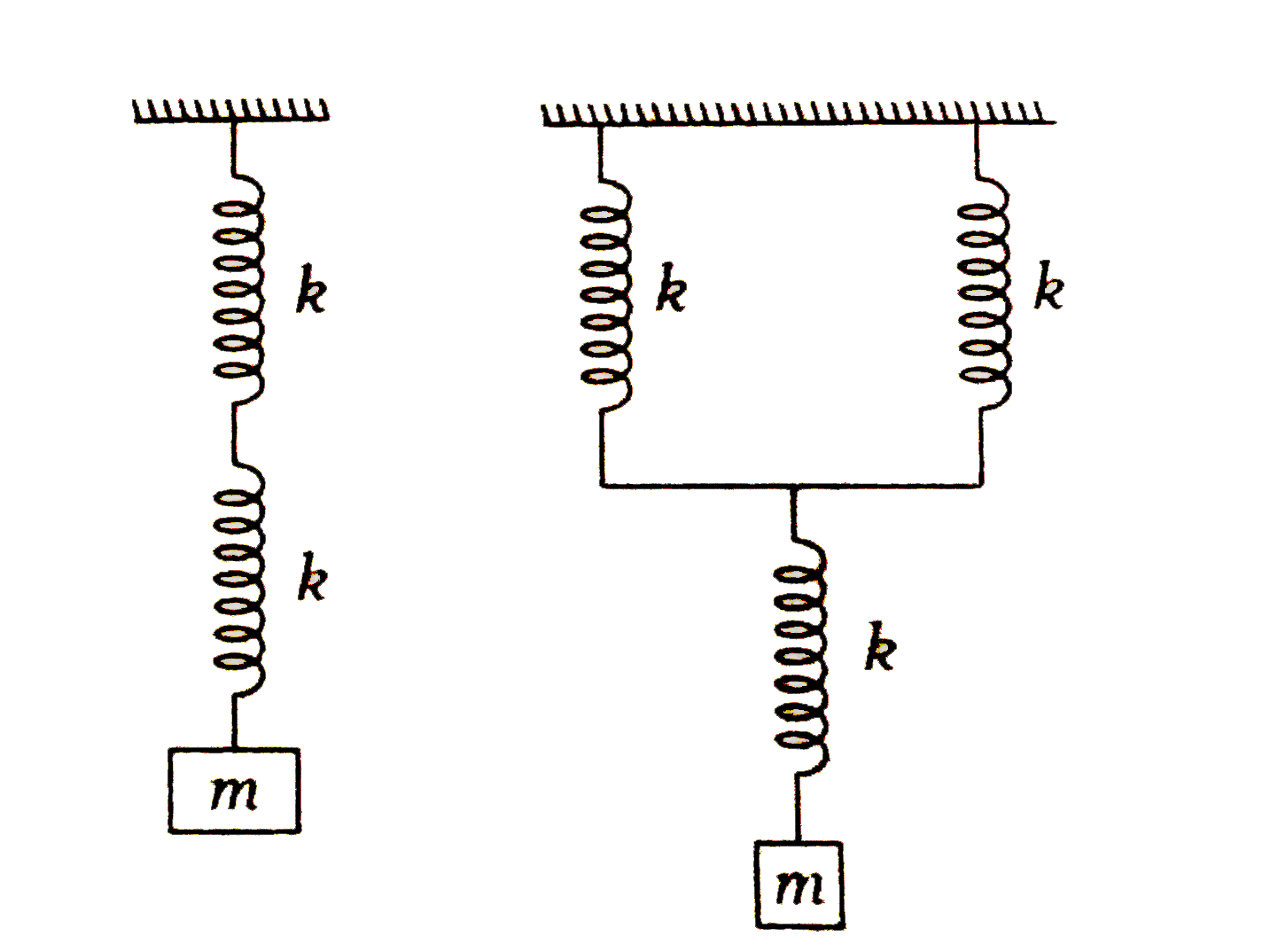four different springs arrangements. If the mass m in each arrangement is displaced from its equilibrium position and released, what is the resulting frequency of vibration in each case? Neglect the mass of the spring. Figure (a) and (b) represent an arrangement of springs in parallel and (c) and (d) represent springs in series?

Step by step video & image solution for four different springs arrangements. If the mass m in each arrangement is displaced from its equilibrium position and released, what is the resulting frequency of vibration in each case? Neglect the mass of the spring. Figure (a) and (b) represent an arrangement of springs in parallel and (c) and (d) represent springs in series? by Physics experts to help you in doubts & scoring excellent marks in Class 11 exams.
Updated on:21/07/2023Similar Questions
Figure 14.26 (a) shows a spring of force constant k clamped rigidly at one end and a mass m attached to its free end. A force F applied at the free end stretches the spring. Figure 14.26 (b) shows the same spring with both ends free and attached to a mass m at either end. Each end of the spring in Fig. 14.26(b) is stretched by the same force F.

What is the maximum extension of the spring in the two cases ?
View SolutionThree identical springsare arranged as shown. The force constant of cach spring is k. The block is of mass M in each of the cases.

View SolutionFind the time period of the oscillation of mass m in figure. What is the equivalent spring constant of the pair of springs in each case ?

View SolutionFind the time period of the oscillation of mass m in figure. What is the equivalent spring constant of the pair of springs in each case ?

View SolutionFind the time period of the oscillation of mass m in figure. What is the equivalent spring constant of the pair of springs in each case ?
View SolutionSome springs are combined in series and parallel arrangement as shown in the figure and a mass m is suspended from them. The ratio of their frequencies will be

View SolutionAn object of mass M is attached to a vertical spring and in the equilibrium position the extension of the spring is x. The mass is raised upwards, till the extension of the spring is reduced to zero and then mass is released. The maximum extension of the spring in this case is
View SolutionTwo springs are connected in parallel as shown. If the mass is displaced from its equilibrium position and released. What is the resultant frequency of vibration?
View Solution

